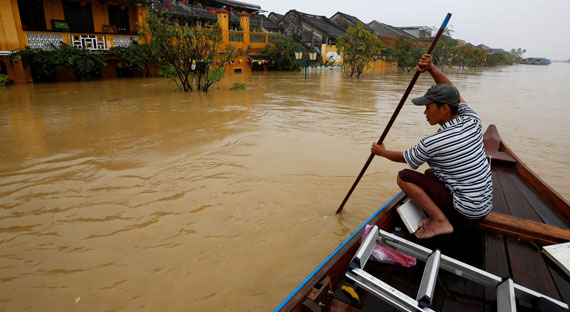Climate change is here
Vietnam’s vulnerability is exacerbated by its 2,150-mile-long coastline and proximity to the tropics. Vietnam’s 95 million people and the bulk of its economic assets, including a large rural population, are concentrated in the coastal lowlands, which are susceptible to typhoons.

Every year since 1990, natural disasters have cost on average about one percent of GDP and caused 500 casualties. In 2017, Vietnam was affected by 12 major storms, which caused deadly floods and destroyed hundreds of thousands of homes and hectares of crops.

Climate change will likely exacerbate pressure on the environment: more frequent and more intense storms could affect crop yields and production, impacting rural incomes, food security, and commodity exports. Increased rainfall intensity will damage roads and railroad networks. Higher temperatures will raise demand for electricity. Risks will weigh disproportionally on the poor who could be forced to migrate inland or towards large cities.
Wanted: more sustainable growth
Vietnam’s strong economic performance has helped reduce poverty over the past decades. However, rapid industrialization since the late 1980s has relied on the intensive and unsustainable exploitation of forests, fisheries, and other renewable and nonrenewable natural resources.
Moreover, Vietnam’s stock of natural capital has declined as mineral and nonmineral resources were depleted. Agriculture and industry have contributed significantly to degradation of natural capital. Vietnam’s extensive use of fertilizers contributes largely to polluting land and water and adds to legacy issues related to the war.

Vietnam is among the top ten countries affected by air pollution: in large cities and industrial zones, levels of fine particulate matter are much above safe levels and comparable to that of China. Greenhouse gas emissions are expected to double between 2010 and 2020 and triple by 2030. Electricity production from coal-fired plants is a major contributor to air pollution, with a quarter of the domestic supply produced from coal.
Transitioning to a green economy
The Vietnamese authorities recognize the challenges posed by climate change and a more sustainable, greener growth model is at the core of their development agenda. Vietnam ratified the 2016 Paris Agreement on Climate and committed to reducing greenhouse gas emissions by at least 8 percent by 2030 and to achieving the United Nations Sustainable Development Goals (SDGs) by 2030.
The recently created National Committee on Climate Change, chaired by the Prime Minister and including key ministers, oversees climate change and green growth programs.
Policies that can better prepare Vietnam for the future impact of climate change should focus on:
- Lowering the intensity of fossil fuels in Vietnam’s GDP: raising the contribution of renewable energy would help to break the link between greenhouse gas emissions and output.
- Providing stronger incentives for households, firms, and government to pursue green growth: taxation of fossil fuels that fully prices environmental and health externalities would nudge energy demand toward renewables and generate revenue to finance adaptation and mitigation plans.
- Investing in climate-resilient infrastructure would help households and firms cope with storms. The expected cost of natural disasters could be usefully included in public debt sustainability analyses.
- Promoting research and development and other innovation policies can provide further incentives to investment in existing clean energy sources and improvements in clean technologies.
- Shifting to autonomous, electric, shared vehicles, as already planned in Singapore, would help reduce congestion and pollution in cities. Improved government capacity to coordinate technological change and promote innovation and green growth would be key.














